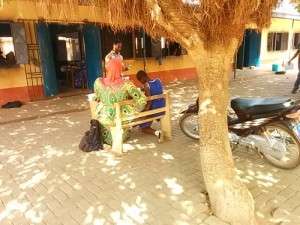How do you encourage girls to enroll in school and engage them sufficiently so they continue their education? We asked Woubedle Alemayehu, the senior program manager in the impact evaluation unit at Social Impact, to tell us more about the evaluation for the Discovery Learning Alliance Discovery Girls Education Project she’s leading in Kenya, Ghana, and Nigeria.
First, tell us a little about Social Impact and your role at the organization.
Social Impact is a global social enterprise dedicated to helping international agencies, civil society, and governments become more effective agents of positive social and economic change. Since its founding in 1996, Social Impact has completed over 500 evaluations in more than 75 countries and is a recognized global leader in monitoring and evaluation (M&E) services.
“…we translated the survey tools into local languages for each of the countries using the translation feature and were able to administer the surveys in local languages.”
I currently manage the impact evaluation for The Discovery Project, a girls’ education initiative that targets three regions – Kenya (Nairobi and Wajir); Ghana (Northern Ghana); and Nigeria (Kano State). The project has two broad intentions: First, to encourage girls to enroll in school, and second, to engage them in the classroom sufficiently so that they continue their education.
(The project is implemented through the Discovery Learning Alliance as part of the Girls’ Education Challenge (GEC) initiative, with the support of Discovery Communications and the Department for International Development (DFID).)

Where are you in the project now?
We completed the baseline in 2014, midline in 2015, and now we are currently working on the endline (2016) in all three countries. We have utilized SurveyCTO for all our data collection activities across all three phases (baseline, midline, and endline).
Here are some of the SurveyCTO features we used during the project:
- At baseline, we used the GPS capabilities to record data on locations of schools and households within our study. We also used the time stamp capabilities to track how long surveys took to complete.
- At endline, we used the pre-populate function to build into the surveys the respondent names that were surveyed at baseline. This allowed us to limit errors in entering names and IDs of respondents. In addition, we also pre-populated enrollment data for schools from baseline and midline and we were able to make comparisons about increase or decrease in enrollment at endline. Through both the pre-populate and calculation features, we were able to inform the enumerators whether enrollment decreased or increased at endline from baseline (or from midline) and ask the school to provide explanation for these changes.
- For all three phases of data collection, we translated the survey tools into local languages for each of the countries using the translation feature and were able to administer the surveys in local languages. In Ghana, the surveys were programmed in Gonja and Dagbani; in Kenya, Swahili; and in Nigeria, Hausa.
For this particular project we had about five tools per country, which were administered both at the school and household level. It was very helpful for us to have all the surveys programmed on the tablet.
“The software is very easy to use, learn, and adapt to any of your projects…”
 Any advice for others?
Any advice for others?
For me, the best part of using SurveyCTO is the ability to easily interact with the support team regarding any issues that we have in terms of programming surveys or issues with data on server. They are very quick to respond to queries and also take our suggestions very seriously. I have seen a tremendous improvement in the software over the past three years, and I think it is a testament to how dedicated they are to serving their clients and taking feedback and suggestions. The software is very easy to use, learn, and adapt to any of your projects, and all at a decent price tag.
Images courtesy of Social Impact




